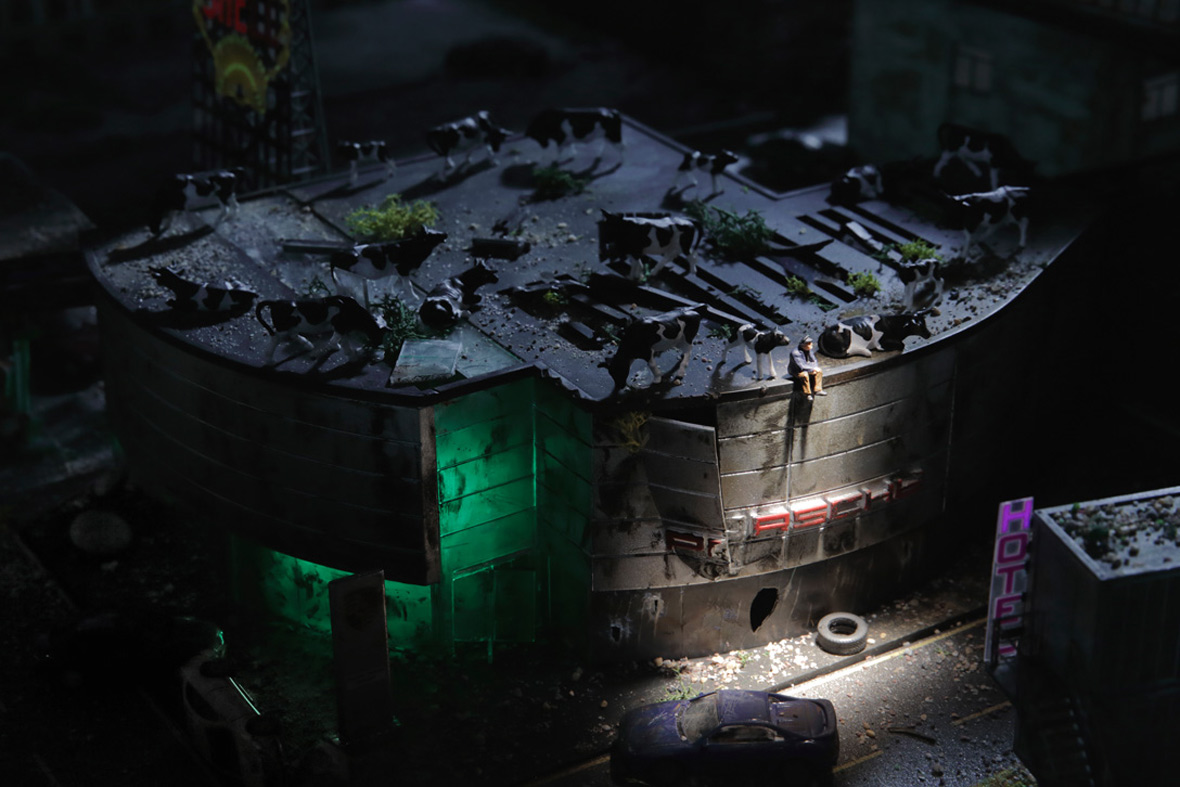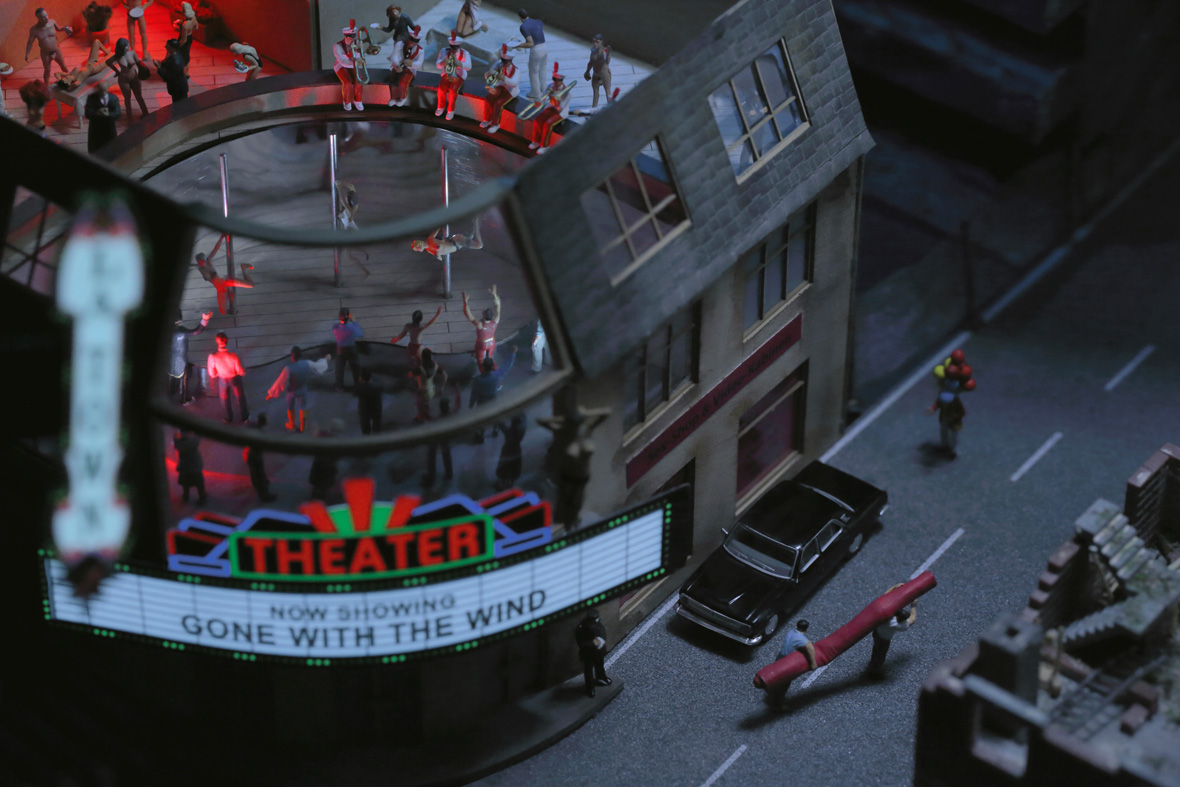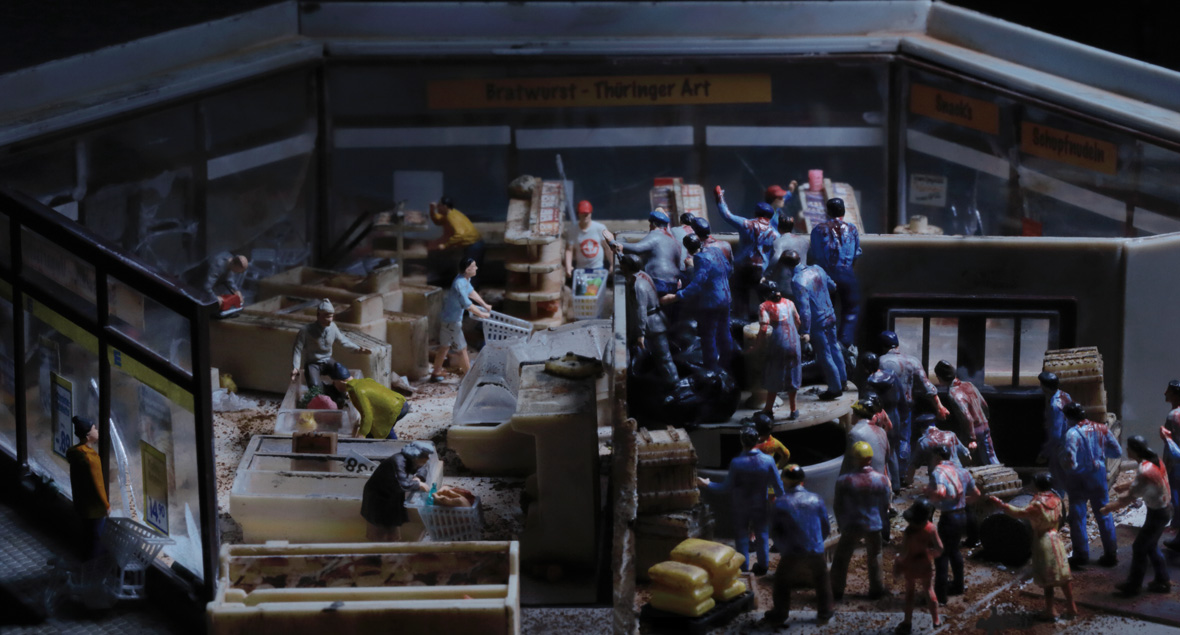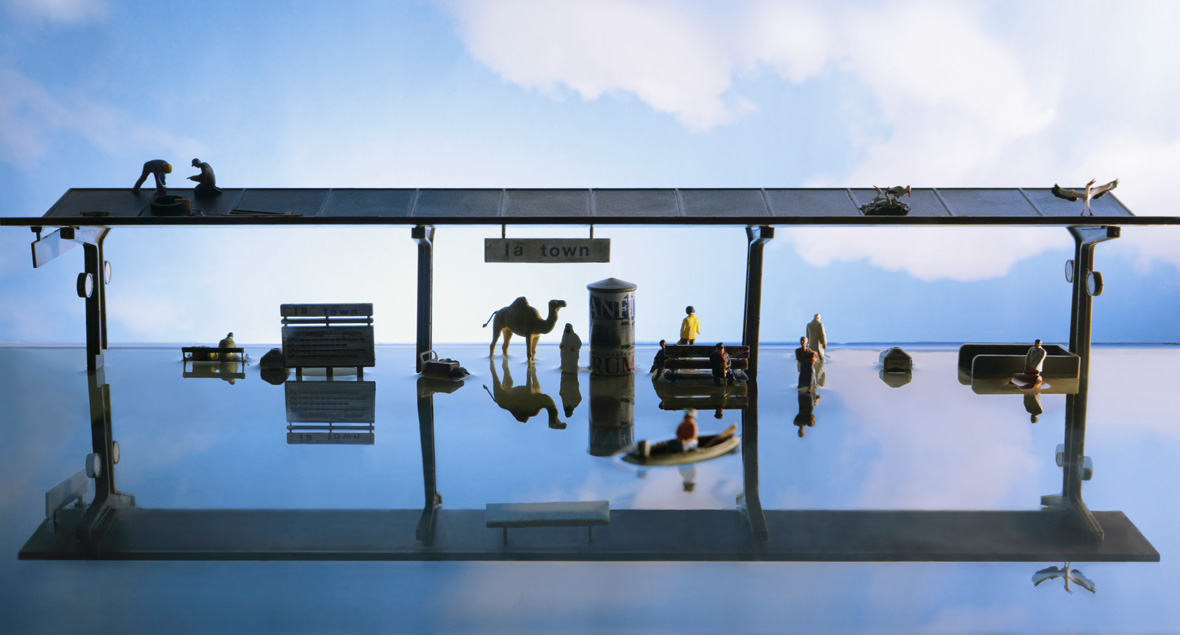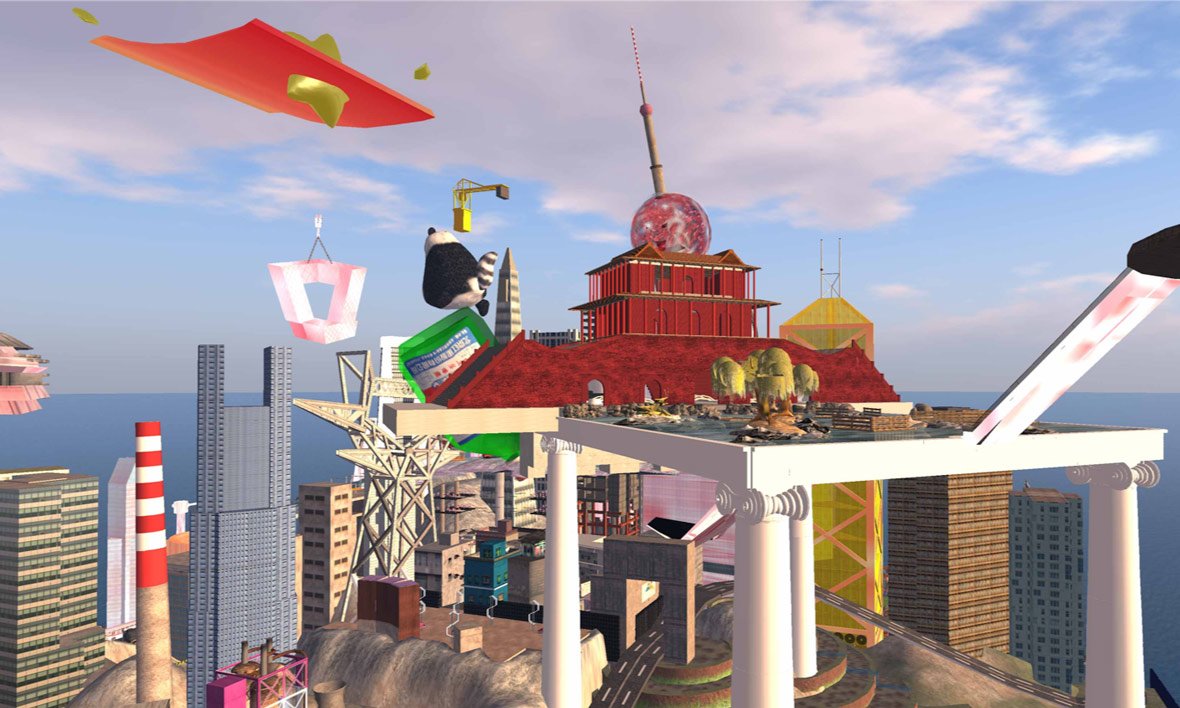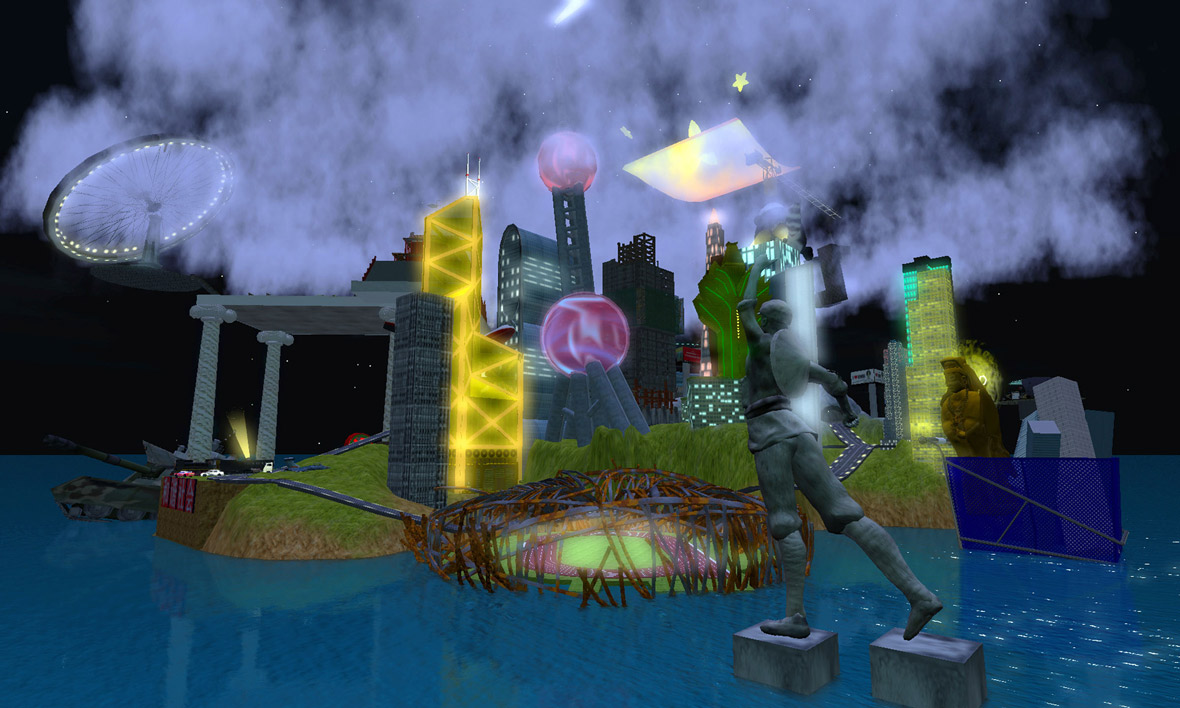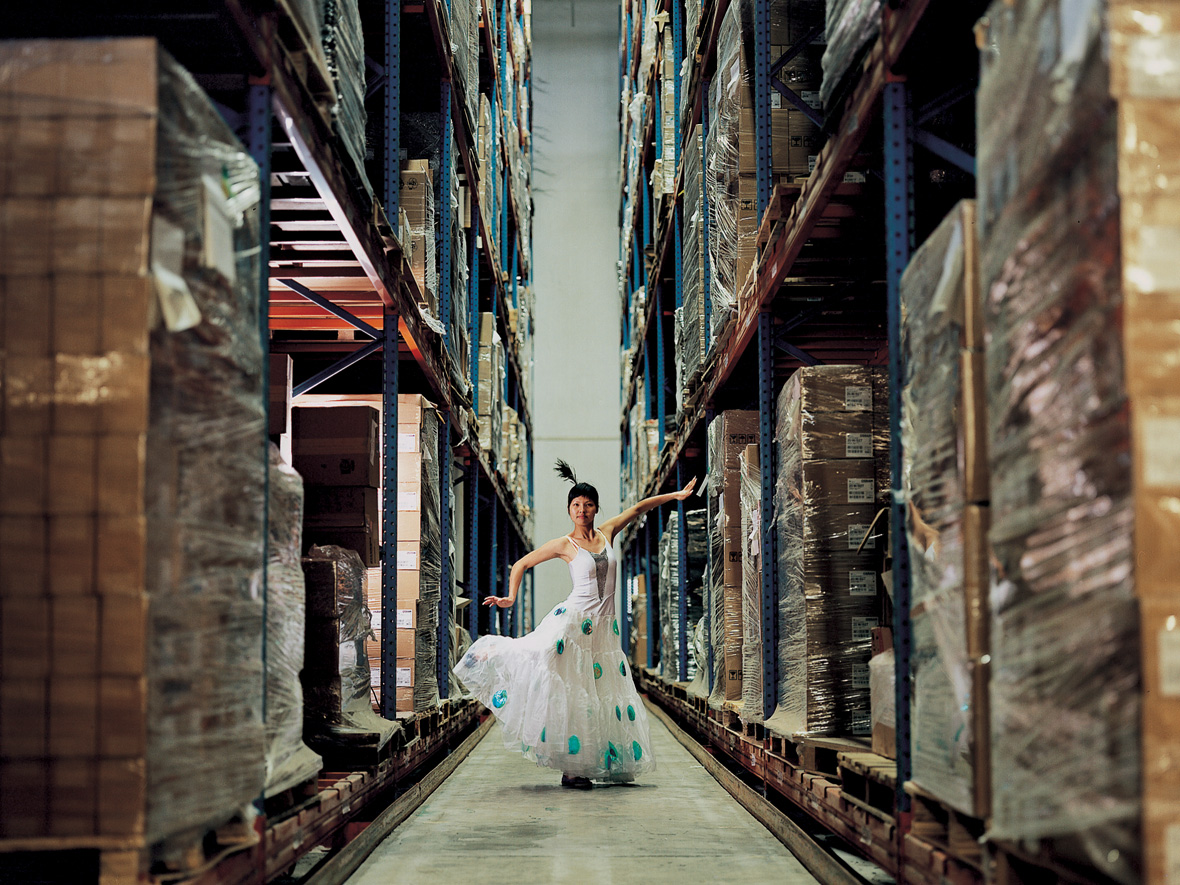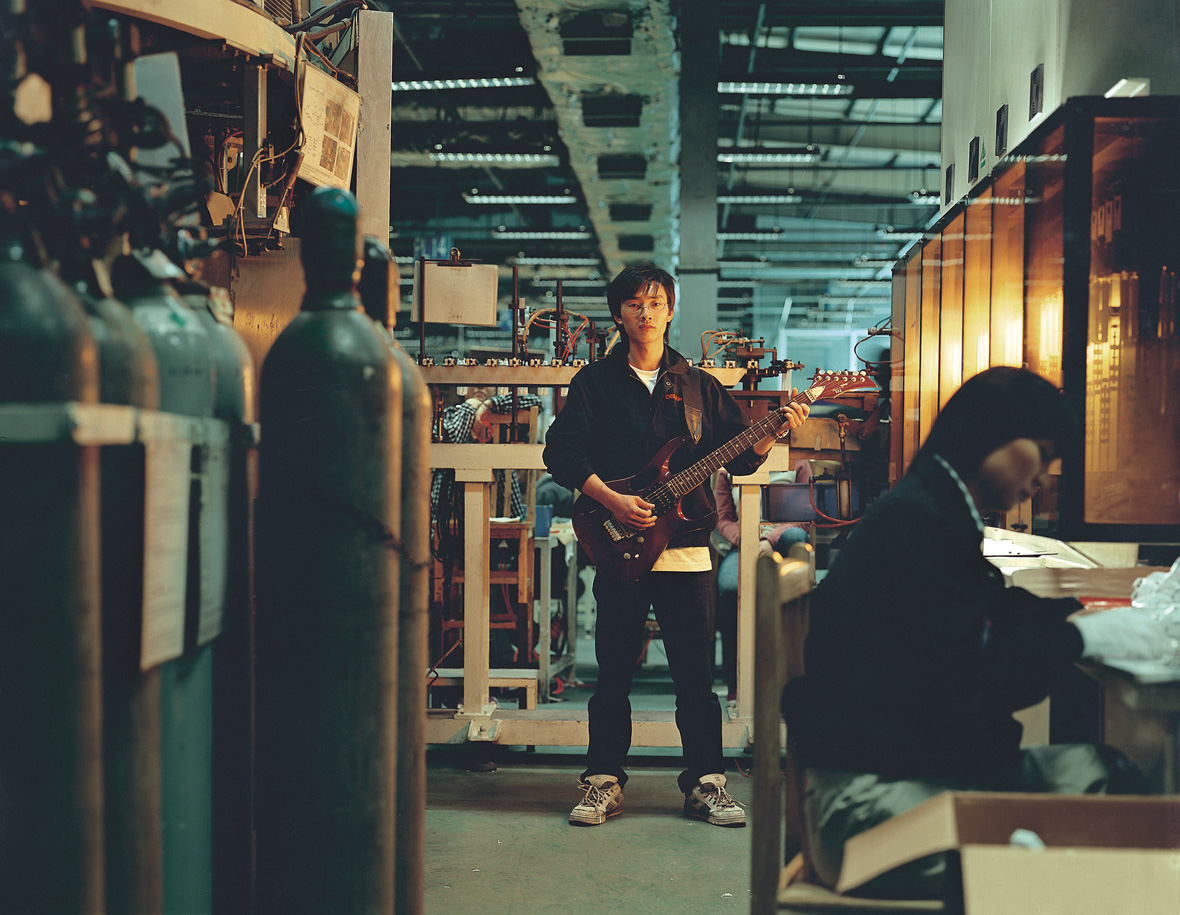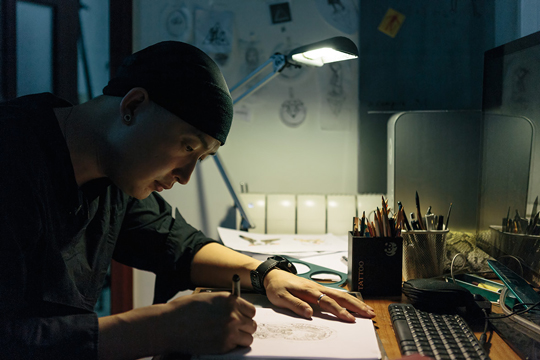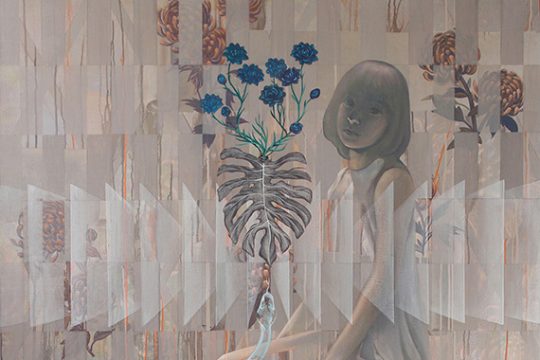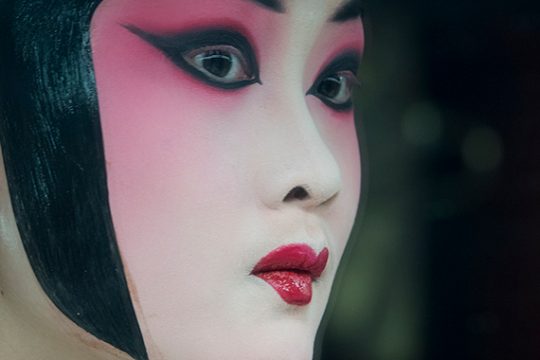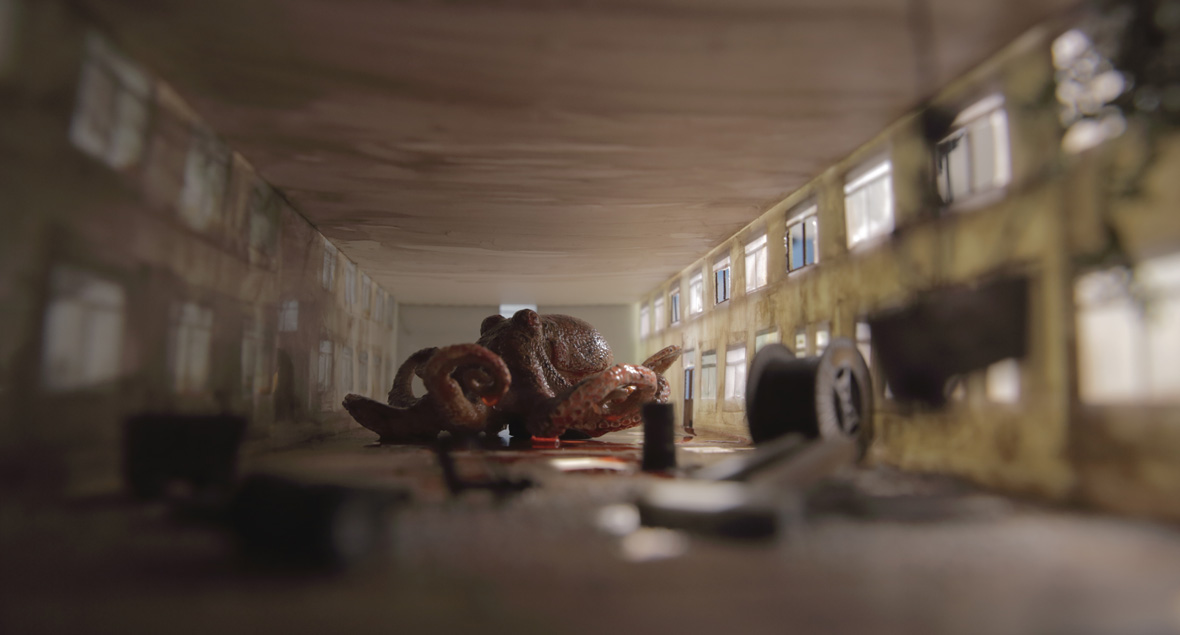
Guangzhou-born artist Cao Fei uses her art as a medium to discuss life, culture, and societal issues. Being amongst the first generation of artists to grow up after China’s reform and opening up to the world, her aesthetics and creation process have been influenced by both Eastern and Western culture. Cao Fei’s frequent participation in the Venice Biennales, and her impressive body of work has led to her being known as one of the most influential young artists in China. Her video installation Whose Utopia? is part of Tate Modern’s collection in London. She also spent three years working on RMB City, a virtual city completely built in the online game Second Life; an entire chapter in the book Art Since 1900 is even devoted to the project. Neocha recently chatted with Cao Fei about her philosophy in art and in life.
来自广州的艺术家曹斐用影像探讨生活、文化和社会现象。她是出生在中国改革开放后的第一代艺术家,审美和创作深受国际化后中国社会和文化影响。曹斐多次参与威尼斯双年展,是中国近年来最有影响力的青年艺术家之一。她记录工厂生活的视频装置《谁的乌托邦?》收入英国伦敦泰特当代艺术馆馆藏,耗时三年有余建造的数字虚拟城市《RMB City》被收入《1900年以来的艺术》一书。新茶和曹斐聊了聊她的创作哲学。
Neocha: Your work has been shown in both art galleries and cinemas. Sometimes they are called experimental films, sometimes video art. How do you feel about the difference between the two experiences?
Cao Fei: Being in a cinema is about “immersion”, which means the experience revolves around focusing on the film. When the doors are closed, the audience has to finish the film within an allocated period of time without interruption. It allows the audience to experience everything in its entirety – whether they like or dislike the film, people are more compelled to stay in the room and watch. In cinemas, I expect the audience to watch the entire film. However, in galleries and museums, the videos are shown in spaces that are open to the public on a loop – so it’s a matter of “fate” if the audience even sees the film. Distractions are another issue for galleries since people are constantly moving about. I don’t mind a bunch of people walking around to view art installations, performances, or paintings. But nowadays, video art has become a “fluid art form”; if I had to choose I would have my videos in open galleries. I want the audience to have different ways of viewing my work and allow my films the chance to reach more people.
Neocha: 你的作品游刃于艺术馆和电影院之间,有时是实验电影,有时是视频艺术。其中的经历有什么不同?
曹斐: 电影院更多是关于 “倾注”,对观影的独占,即在电影院“关上门”的前提下,迫使观众在影片全长度时间内观看完毕,期间没有任何干扰,让观众体验完整的信息传达,无论过程中厌恶还是嫌弃沉闷都难以离场。在电影院内,我希望观众看完整部作品。而美术馆、双年展通常是在开放式的展览场地进行循环播映,观众和影像的相遇相随相知靠的是“缘分”,观众受到往来观众的干扰是存在的。我不介意一堆人来来往往在展场各自观看一个装置、表演、绘画,但当录像艺术变成“流动”的艺术品的今天,我的选择是“开放的”,就是给予观众体验不同的观影方式,也是给予影片更多的与人相遇的机会。
Neocha: Many of your works, such as I, Mirror and La Town, discuss the relationship and communication between cultures and countries. What’s your most direct impression of the cultural differences between the East and the West, and how do you get your inspirations from both?
Cao Fei: The cores of Eastern and Western cultures are religions and traditions, and it’s these things that pulls the two different cultures towards each other. As for whether a piece of work is “Western” or “Eastern,” many artists of the new generation don’t see it so black-and-white; because if you look at the East from a Western point of view, you’d expect something “Eastern”. My vision and aesthetics are a mixture of post-modern cultures. It’s a combination of the different cultures that poured into China after globalization and me being exposed to so many different cultures in this modern age of interconnectivity.
Neocha: 你的很多作品包括《I, Mirror》和《La Town》都讨论到不同的文化和国度之间的关系和交流。你在工作中对中西文化差别最直观的感受在哪里,是否从中汲取灵感?
曹斐: 东西文化背后延续的信仰与传统内核,它会成为东西文化中相互吸引的核心。关于讨论作品的中式或西化,在很多新代际的艺术家中已经消弭,因为通常在西方的角度看东方,会惯性期待“东方性”。我的视觉与审美,美学教育和文化营养大部分是后现代的混杂,自即全球化之初前互联网时代的各种文化进入中国后的大融汇。

Neocha: At which stage of the creation process do you say: “Yes, this is exactly what I want to make”? Do you dive in from there or do you simply start working and see how it turns out? For example, in the making of San Yuan Li, you used multiple cameras and you edited the film yourself. Did you finish the filming first and began editing, or did you work back and forth between shooting and editing? How about some of your bigger projects such as La Town?
Cao Fei: There was no script for La Town, and it was the same for many of the shots in the I, Mirror and RMB City series. I usually just begin with a fairly vague idea and make storyboards in my head. The concept only gets refined after it’s been shot. Even as a child, I liked starting with a small and simple idea, then slowly flesh out the entire concept. The back-and-forth shooting and editing happens commonly in my productions. After locking in a set theme for San Yuan Li, the six or seven of us scattered and shot in different locations. We’d regroup from time to time to check the footage and discuss what we wanted to shoot next, which direction we wanted to go in, and what needed to be adjusted. Many of my projects are a combination of spontaneity, flexibility, pre-production, and post-production. My projects are like sponges; they absorb everything as they come without discriminating. There is also a lot of flexibility and my projects have been able to adapt easily to unforeseen issues. Many people consider I, Mirror to be an animated film, but in reality it’s a documentary. The Second Life online game already existed, and every virtual avatar is controlled by a real person. I created a character named “China Tracy,” travelled this virtual world for half a year, and simply recorded the journey.
Neocha: 在创作的过程中,哪个阶段会说“对,这就是我想做的主题/形式”,然后投入去做,还是会先做起来再看结果会是怎么呈现的?比如在拍《三元里》的时候,有这么多的摄像机,你又亲自做剪辑,是否全部拍完之后再后期,还是会有来来回回补充拍摄的过程?再像《La Town》这样比较大型的项目呢?
曹斐:《La Town》没有剧本,《I,Mirror》、 《RMB City》项目里很多影像作品也没有。通常我大概有个方向,分镜头都在脑子里,拍出来其实才是具象的勾画。我自小的特点是喜欢从一个局部入手,然后勾勒出全貌。来来回回补充拍摄肯定经常有,《三元里》有了题旨以后,我们六、七个人分散在不同街道拍摄,不定期聚会大家一起看素材,讨论接下来再拍点什么,哪些方向内容需要继续发展或调整。我很多项目是结合随性随机与前期规划,也有后规划。可以像海绵一样肆意吸收,也需要现场的机动应变与临时发挥的紧急感。对于《I, Mirror》,很多人以为我做了动画片,但是其实是纪录片,因为“第二人生”这个平台已经存在了。每个化身后面都是一个真实的人在操控。我创作了“China Tracy”这个角色在平台里环游世界半年,记录了这个过程。
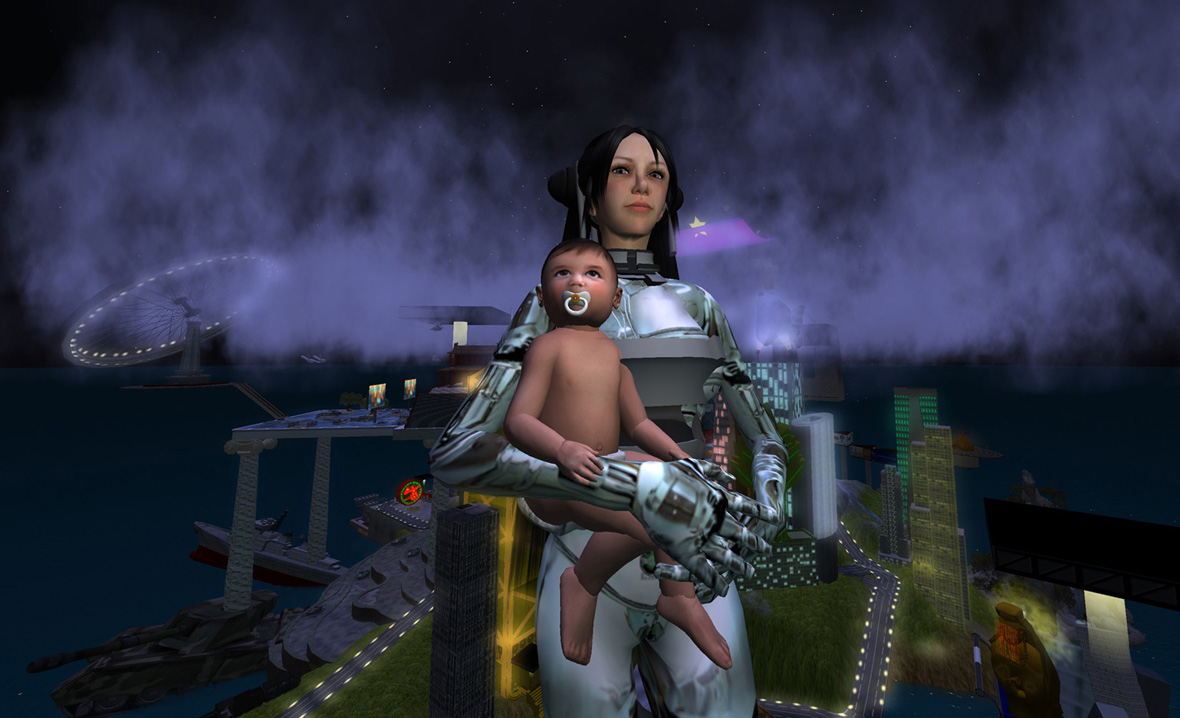
Neocha: Most of your work uses music instead of narration; however, in La Town you used long narration. What led to this choice?
Cao Fei: Music has the narrative function in most of my works. La Town uses the new wave French film Hiroshima, My Love as a reference. The video was realistic, so I needed an alien language and alien expressions to use in a conversation in order to dilute the “realism”. I wanted to create a contrast between the imagery and the text, and have the audience think about the different layers of meaning outside of the actual video. Out of all the musicians I’ve worked with, Dickson Dee is one of the few that fully understands the kind of music that I want. We worked together for La Town, Chain Reaction, and San Yuan Li. He’s an “artist of sound” and not just a common musician. The way that we worked together was I would first cut a rough draft, send it to him, and then we’d discuss the vibes or mood I wanted in this part, then what I expected to have in the next part. We’re constantly discussing and fleshing everything out. After he sends the music to me, I’ll tinker with everything to see how it all fits together.
Neocha: 你的许多作品都是用了非常棒的音乐音效,而不用人物念白,在《La Town》中用了大篇幅的对话。这是基于什么考虑?
曹斐: 对于大部分我的作品,音乐承担了旁白的功能。《La Town》参考和套用了新浪潮电影《广岛之恋》的法语对白,《La Town》影像上是写实主义的,因此需要一些外来的语言、语意,用对话的氛围把画面传达的“实”给稀释掉,以生产某种图像和文本相互之间差异性的对照,从而将观众思绪引到画面以外更多的层次当中。Dickson Dee是我合作音乐家里很懂得导演或我本人要的音乐强度的。一起合作的作品有《La Town》,《Chain Reaction》和《三元里》。他是声音艺术家,不是普遍意义上的作曲家。我们合作是我先剪一个大概给他看,我和他讨论,第一部分我要怎么样的一个状态,第二部分是怎样的。这些需要不断交流,然后他再做一版音乐给我,我再调试。
Neocha: Do you feel like your artistic pursuits and commercial works conflict with one another?
Cao Fei: Each project is different. I’ve participated in many public art projects. For example, I worked on the Lejiu Tuxin project that involved light installations on Hong Kong’s tallest building, the International Commerce Centre. All of Hong Kong could see my art on this landmark; the audience could even listen to the accompanying music on their iPhones. At the Hong Kong M+ Museum’s inflation exhibition in 2013, I made a huge inflatable sculpture in the shape of a roasted piglet (a traditional sacrifice in southern China), and the audience could walk into its body. I would see entire families queue to see the artwork on weekends. For me, there really isn’t much conflict between creating personal artistic work and commercial work.
Neocha: 艺术创作和追求商业价值会有冲突吗?
曹斐: 不同项目诉求不同,我参与不少公共艺术项目,比如2015香港最高的大楼ICC环球贸易大厦灯光艺术项目《乐旧∙图新》,全港人都能看到我的影像作品出现在其地标建筑上。观众在现场可以通过苹果手机听到伴奏的音乐。2013香港M+美术馆九龙充气展,我制作了一头巨大的观众能进入其体内的充气式烧猪(烧猪是南方祭祀用的食品),假日时一家大小男女老少排队入内参观。艺术创作和追求商业价值的冲突是想像与对立出来了。
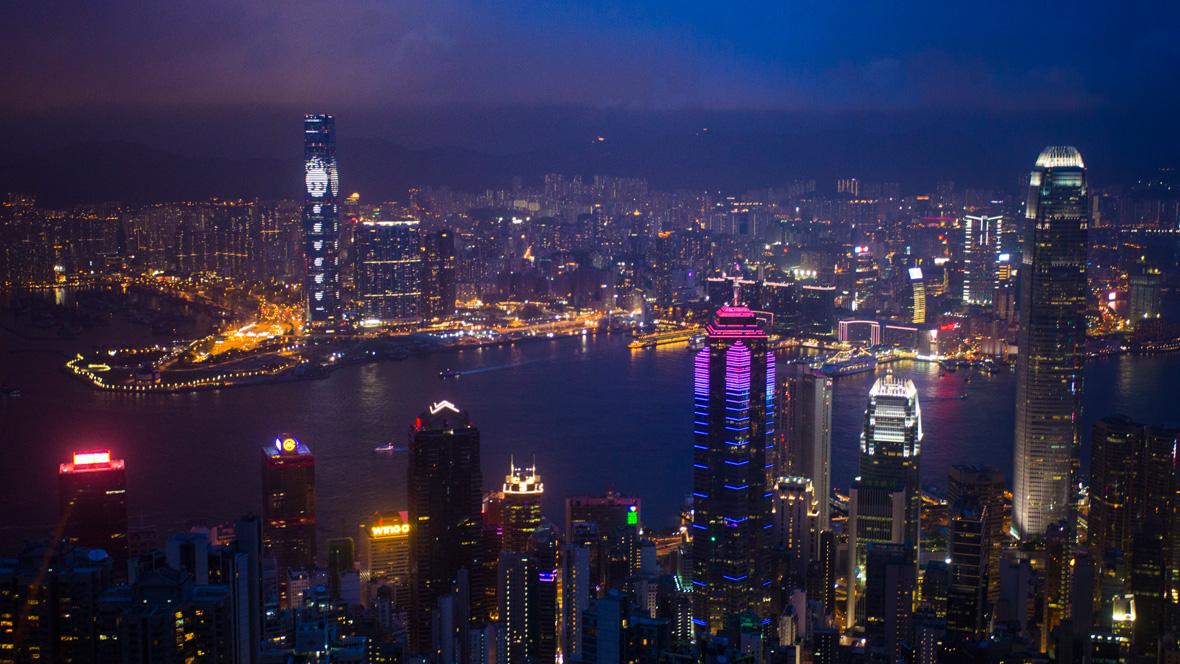
Neocha: Many of your works are related to living spaces, and can be quite philosophical. Do you think artists bear the responsibility to change the world for others and for society?
Cao Fei: Chinese artists simply cannot escape the topic of politics. I was born in Guangzhou. In the 1980s, a lot of western culture, pop culture, and Cantonese TV and films were available in the region. Guangzhou is far from the city centre, so artists there seemed to be more playful with their work. Even though they would discuss politics, they used humor to do it. Art is to surpass the sense of political correctness and to break through the limit of the things we thought we’ve known. Art should transcend the status quo, standards, and correctness. The greatest reward is making an amazing piece of art and having the opportunity to share it with everybody in the world.
Neocha: 你的许多作品都和生存空间有关,会对生活有深层次的哲学思考。你觉得艺术家有改变世界、他人社会责任吗?
曹斐: 中国的艺术家逃不出政治这个问题。我出生在广州,80年代初很多西方文化、流行文化、香港影剧涌入。广州又离中心很远,所以广州的艺术家作品很玩味儿,即使讨论政治也是用幽默的方式。艺术,更多是要超越社会要求的“正确性”,打破既定事物的认知边界,去常识、标准化,正确性。做出好作品能与世人分享,就是最高的馈赠。

